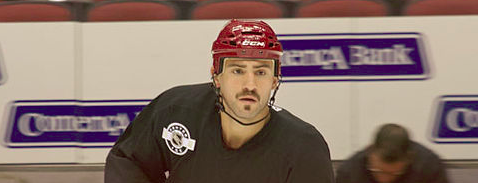
Out of curiosity, and having access to some of the data, I decided I could chart the distribution of player overall ratings in the EA NHL series in its first decade of existence (the first of the series and NHL 99 being the exception). Knowing full well that, by 2005, there was a popular gripe that “anybody could get a 70 overall rating,” it seemed like it would be fun to see how we arrived to that point. As you can see, the ’93 version was remarkable in its near-even distribution; most famously, Tampa Lightning defenseman Shawn Chambers received an overall rating of 1. The subsequent games never attempted a similar approach; there were marked divergences for the ’96 and ’04 versions, the latter essentially bringing us to the place where it seems anyone can get a 70 rating. I’d be interested hear your comments suggesting theories and/or evidence why we saw this kind of movement.
At this point I’m inclined to say, as an NHLPA-approved product, it probably wasn’t enjoyable for the players to have low ratings, and thus have that opinion of them reflected to thousands of young fans. More importantly, those fans probably didn’t get much of a kick out of playing with poorer players (playing against them, on the other hand…). I’d also guess that, when you are rating a player’s numerous attributes, it’s hard to end up with a 1 overall unless you had negative values (which they didn’t) or a very low weighting for multiple attributes (which they mostly didn’t).
Why would I even bother looking at this anyway? Well, for two reasons. One, after boxcar statistics (goals, assists, points) and +/-, video game ratings were really the next attempt to derive a publicly-consumed statistic for player talent and value. Whole generations observed, and potentially internalized, the way these games conceptualized important and unimportant elements of the game. Understanding hockey should be as much an understanding of society as it is an understanding of the technical components of the game.
Postscript: I plan on breaking down this data in a more complex fashion in future posts, so stay tuned…
Postscript II: Best theory I’ve seen so far, from Reddit user “DavidPuddy666” — that the inclusion of CHL and other leagues raised this bar. For the most part, though, I recall the international rosters and European leagues following these distributions. In other words, you didn’t have a bunch of sub-50 overalls buried on international rosters. The European leagues were even worse for this; top players in Euro leagues are still rated as if they would be top NHL players. As for the CHL leagues and the AHL, Puddy might have a point — but the AHL didn’t appear till NHL 08, and the CHL leagues till NHL 11. In fact, the international teams theory also has this chronological issue, as only the best international teams make their appearance first in NHL 97, before an additional 16 international teams are added for NHL 98.











